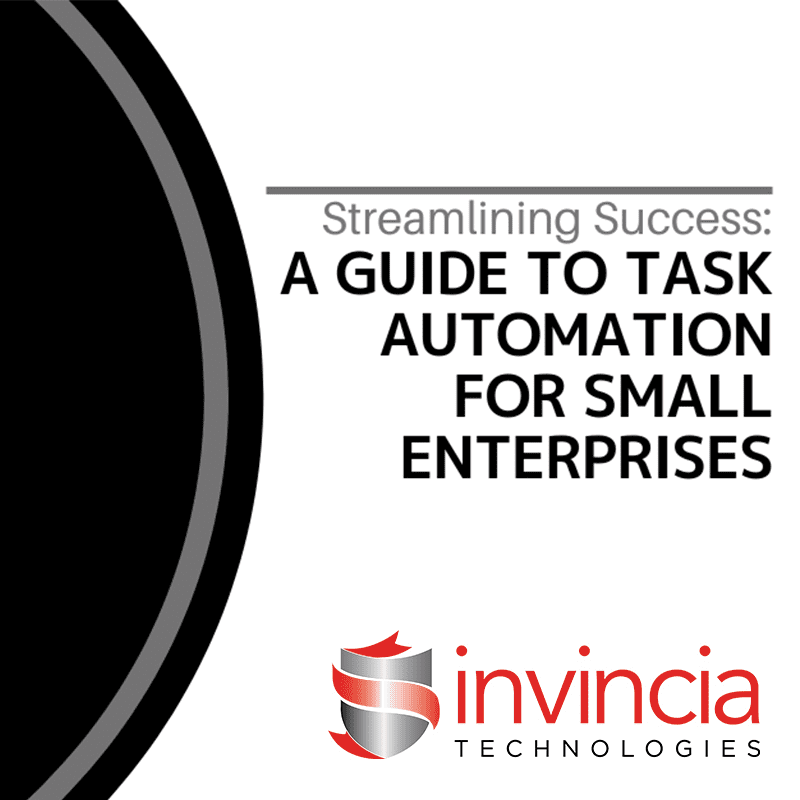Running a small business is a whirlwind of activity, requiring you to juggle countless tasks, wear multiple hats, and race against the clock. What if you could regain some of that precious time? Task automation can be your secret weapon for streamlining your workflow and boosting productivity. By automating routine and repetitive tasks, small businesses can save valuable time and resources, ultimately increasing productivity and profitability.
This guide will introduce you to the essentials of small business task automation. It aims to help you understand the benefits, identify tasks to automate, choose the right tools, and implement automation effectively.
What is Task Automation?
Task automation leverages technology to handle repetitive, manual tasks. Imagine software managing data entry, scheduling appointments, or sending invoices—all without your constant oversight. This allows you to focus on strategic initiatives that drive growth. In fact, 88% of small business owners say that automation helps them compete with larger companies.
Why Automate in Your Small Business?
Here are several reasons why task automation is a game-changer for small businesses:
- Boosts Efficiency: Repetitive tasks consume significant time. Automation eliminates manual effort, allowing your team to focus on higher-value activities.
- Reduces Errors: Human errors are inevitable. Automation minimizes mistakes in data entry, calculations, and other repetitive tasks, ensuring better accuracy and consistency.
- Saves Money: Time saved is money saved. By automating tasks, you can free up your team’s time and reduce the need for additional manpower.
- Improves Customer Service: Automation can handle routine customer inquiries and send order confirmations, freeing your team to provide personalized service.
- Enhances Scalability: As your business grows, automation can manage the increased workload, allowing you to scale without immediately adding more staff.
What Tasks Can You Automate?
You can automate various tasks across different departments in a small business. Here are some examples:
- Marketing: Schedule social media posts, send automated email campaigns, and generate personalized marketing materials.
- Sales: Generate quotes, send automated follow-up emails, and track sales performance through automated reports.
- Customer Service: Set up chatbots to answer frequently asked questions, automate email responses for order confirmations, and manage appointment scheduling.
- Human Resources: Automate payroll processing, manage employee onboarding tasks, and send out automated reminders for performance reviews.
- Finance: Automate data entry for invoices and receipts, schedule recurring payments, and generate automated financial reports.
Getting Started with Task Automation
Ready to automate? Successfully implementing automation requires careful planning and execution. Here’s how to get started:
- Identify Repetitive Tasks: Analyze your daily workflows and pinpoint repetitive tasks. Look for tasks that consume a significant amount of time. Ask employees about the manual tasks that take up most of their time.
- Choose the Right Tools: There’s a vast array of automation tools available, from simple scheduling apps to complex workflow management platforms. Research and choose tools that integrate seamlessly and are compatible with your existing software. Get expert IT help to ensure the tools cater to your specific needs.
- Start Small: Don’t try to automate everything at once. Begin by automating a few key tasks, then gradually expand as you get comfortable with the technology.
- Invest in Training: Provide your team with proper training on the new automation tools. Ensure they understand how to use them effectively and feel comfortable integrating them into their workflow.
Overcoming Common Challenges
Implementing task automation can come with challenges. Here are some common issues and how to overcome them:
- Resistance to Change: Employees may resist new technologies. Address this by communicating the benefits of automation and involving them in the process.
- Technical Difficulties: Technical issues can arise during implementation. Work closely with your provider’s support team to resolve any problems quickly.
- Integration Issues: Ensure your automation tools can seamlessly integrate with your existing systems. Test integrations thoroughly before full implementation.
- Cost Concerns: The initial investment in automation tools can be high. Focus on the long-term savings and benefits to justify the cost.
- Security Risks: Automating tasks can introduce security risks. Put strong security measures in place to protect sensitive data.
The Future of Automation for Small Businesses
Automation is not about replacing humans; it’s about empowering them. By automating repetitive tasks, you free up your team’s time and talent, allowing them to focus on strategic thinking, creative problem-solving, and building strong customer relationships. As automation technology continues to evolve, small businesses will have access to even more powerful tools to boost productivity. Automating now gets you ahead of the competition.
Ready to Embrace the Time-Saving Power of Automation?
We can help you reclaim your time and empower your team. Our technology experts can guide you in optimizing technology and finding the right areas to automate for the biggest benefit. Contact our automation experts today to schedule a chat.

